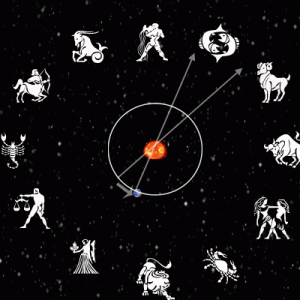
Astrology 101: What Exactly is a Zodiac Sign?

Let’s see if we can figure out what a Zodiac Sign actually is.
We have to start about 5,000 years ago. when the naming of groups of stars in the heavens began. The reason is that the 12 zodiac signs have the names of some constellations. So where did the names of the constellations come from?
The naming of the constellations (groups of stars) can be credited largely to the civilizations of Mesopotamia around 3000 BCE. The Babylonians were among the first to systematically record their observations of the heavens, dividing the sky into recognizable patterns. These patterns weren’t arbitrary; they were often linked to mythological figures, animals, and stories that held cultural significance. For instance, constellations such as Taurus and Leo were named after animals due to their symbolic importance in Babylonian society.
The Greeks later adopted and expanded upon this system, heavily influenced by Babylonian astronomy. By the time of Ptolemy in the 2nd century AD, many constellations had been established and named in his work “Almagest.” Ptolemy’s catalog contained 48 constellations that formed the basis of Western astrology and are still recognized today.
Astrology itself evolved alongside these astronomical observations. Initially intertwined with astronomy, astrology began as a means of predicting seasonal events and guiding agricultural practices. Over time, it delved into more personal prognostications, attempting to predict individual fates based on celestial alignments at one’s birth, and the idea of “signs” appeared.
Now we have to dive a bit deeper into the 48 constellations and pick out some. We are going to pick out twelve. Ok, we didn’t —the Babylonians did. These twelve are the Zodiac.
The ‘Zodiac” is just the name given to a group of twelve constellations that form a belt around the ecliptic—the apparent path of the Sun across the celestial sphere over the course of a year. The word Zodiac comes from the Greek word “zōdiakos,” meaning “circle of animals,” reflecting this symbolic and imaginative naming tradition.

Ok let’s double back to the Ecliptic… that idea needs some clarification. The ecliptic is a sort of road through the heavens that the sun appears to travel in as we on Earth see it each day. And that road has been divided into 12 sections. Each section is named for a group of stars. So the sun travels a road in the sky that has 12 parts and each part is about the same size. In a year the sun travels the whole road of 12 parts. That road is the Zodiac – the path of twelve constellations the sun appears to travel through each year.
Now here is a point to consider. How do we see the road of the sun in the heavens? In the daytime when the sun is up, we cannot see the stars. The answer is “sunrise.” If you are looking at the heavens before sunrise you can see the constellations and when the sun peaks up over the horizon, it will “appear” in one of them. So if at dawn the sun rises in the sky in the area of stars we call “Leo” then that means the sun is in one of the twelve sections of the Zodiac called Leo. So ancient farmers were well aware of where the sun was rising and could use the constellations as a calendar. If you were to get up each day before dawn and watch for the sun to rise you could too. For example, when the Sun starts to rise in Aries, you would know it was about Spring again.
Now you might think, Aha, I get it, a Zodiac sign is the time when the sun rises in a particular constellation by the same name. Right?
Sort of. And in one the two approaches to Astrology you would be right. This is the Verdic approach to astrology and is called Sidereal Astrology. It is practiced mostly in India. You can practice it by just looking before dawn and seeing in which constellation the sun rises and you will know what the current sign is. And you can look up in what constellation the sun rose on your date of birth and you will know your sign.
But Western Astrology, the kind almost everyone else in the world practices, doesn’t do that. Why not? Seems reasonable. The reason is that there is a wrinkle in time that affects the Zodiac. That wrinkle is the precession of the Earth on its axis. What that means is that over time (like 26,000 years) as the Earth wobbles on its axis the timing of the sun arising in a particular sign changes. Think back to your toy top and remember what it looked like as it slowed down – it wobbled, so does the Earth.
You see, 5,000 years ago if a farmer looked out on the horizon at dawn and saw the sun begin to rise in Aries for the first time, he would know it was the first day of spring. But since the Earth has been wobbling on its axis for 5,000 years since then, if you go out now on the first day of Spring (the 21st of March) you will see the Sun rise in Pisces! The zodiac is precessing, and while from year to year, it makes little difference, in 5,000 years it does.
So Astrologers had a choice to make. Did they “keep up” with the precession of the Zodiac and change the dates of the 12 signs each year to align with the sun rising in a constellation or do something else?

What does this mean? It means a Zodiac sign in Western Astrology is a period of 30 days or so that is named for a constellation that 5,000 years ago the sun seemed to rise in but no longer does.
You might have figured out by now that the Zodiac signs have the same names as 12 of the many constellations, so don’t confuse the constellation Leo with the sign of the same name. The Zodiac sign Leo is named for the constellation Leo in which the Sun appeared to rise 5,000 years ago.
So we know what a Zodiac sign is, and we understand that most of us using Astrology are aligned with that ancient Babylonian farmer. We are using the sky he saw to define the times of the twelve Signs of the Zodiac. We leave it to the Verdic astrologers to look up at dawn and see where the sun is rising, we have to get the kids ready for school anyway.
And there are some cool Zodiac crystals you might want to browse now that you are an expert.
